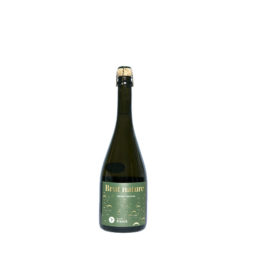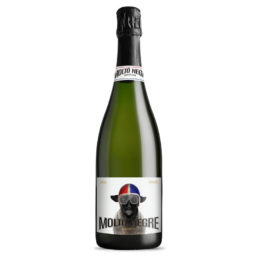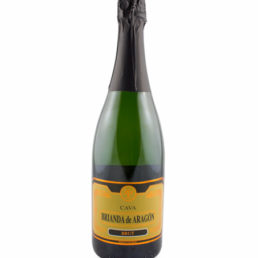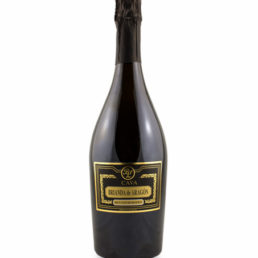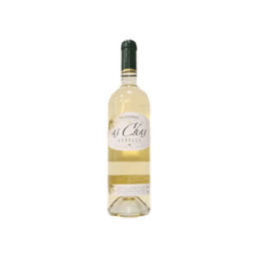11,5% flight.
Showing all 13 resultsSorted by latest
-
Cava Born Rose Brut
Sparkling rosé wine made in the D.O. Penedès (Catalonia, Spain) by Born Rosé Barcelona with organic certificate,is a fresh wine that preserves all the aromas and tastes of the best Pinot Noir organic grape. Its flavor and intensity are accentuated by the fine bubbles, well integrated and persistent. And with the best pale rosé color that shines in our glasses.It is the best drink to sunbathe and accompany sushi, caps, paellas, salads or a fruit tart. Sensational, aromatic, light and very cool, Take it cold! -
White wine – Petit Bernat 2018
White Wine Petit Bernat 2018Production: 24.267 bottles Wine:Pressing, clarification, fermentation and rearing on mothers. Cold maceration before pressing. Alcoholic fermentation of 21 days at 16ºC.Oller del Mas is part of the Denomination of Origin Pla de Bages, a privileged area, surrounded by mountains like Montserrat, or the Parc Natural de Sant Llorenç del Munt i l'obac. -
Cava Brut Nature Subirat – Cellers Blanch
Cava Brut Nature Subirat
Production: 2000 bottles (75 cl.) -
Identitas white wine – Cellers Blanch
Identity it is a single varietal white wine, 100% Subirat Parent from Finca Bastards. Very expressive wine, elegant and sophisticated on the nose, while on the palate it is dry and creamy with fruity nuances.Vineyard: Finca "Bastards" of more than 60 years old, manual harvest and ecological treatment in the Puigpelat area (Alt Camp, Tarragona).Fermentation: Selection of the best grapes for fermentation in chestnut boots, during 3 months I work with his lees using the battonage technique. Subsequent minimum aging 6 months.Production: 1000 bottles (75 cl.) -
White wine Coordinates 41 17 – Cellers Blanch
Coordinates 41 17
Vineyard: Finca "Les Rengles" of more than 40 years old, manual harvest and ecological treatment in the Puigpelat area (Alt Camp, Tarragona).Fermentation: It is made in stainless steel tanks separately, so that each variety maintains its characteristicsProduction: 1.800 bottles (75 cl.) -
Cava Red House – Black sheep
Villafranca del Penedes, cradle of cava, Trepat grow grapes that give rise to our cava. Loamy texture soils, in some cases somewhat chalky, with some clay content.Upon receipt of the table in the winery temperature thereof is lowered to 5 ° C for later making pressing. Use only the flower must first pressed. Fermentation about 14 ° C 25 days to preserve the maximum power of the aromatic variety.The bottle rests for a minimum of nine months in rhyme. After the disgorgement to remove sediment is added to the liquor issue.This is a cava extra brut, with only 3,5 grams per liter of sugar. And slightly pale ink asalmonado fruit variety Trepat. floral and fruity nose, with aromas of small berries. The palate surprises until the last bubble, with one step up, tasty, creamy, where blackcurrant flavors are emphasized, blackberry and pralines.Limited production 34.623 bottles. -
Cava Codorníu – Sweet Anna of Codorníu
Sweet Anna cava is a fresh and versatile. A champagne made primarily with Chardonnay, to complete your blend with the traditional varieties of Macabeo, Xarello and Parellada. The result is a cava fresh and soft on the palate, full of vitality.
Fantastic combination of fruity scents with the balance sweet in the mouth. The two phases taste, harmonize perfectly: the smell compliments the taste and reciprocally. On the nose it is appreciate fresh notes of fruits of spring and white flowers, memories of peaches and almond flowers. In the mouth provides a pleasant feeling of density, always keeping a great freshness and vitality.
-
White wine Pere Olivella Galimany – White
The origin; vineyards of the finca's own farm Can Pere del Maset. We used the same trilogy of varieties that allow us to produce our sparkling wines of cava, the Maccabee, the Xarel • lo and Parellada. Viticulture dry, do not irrigate. Rational use and fully controlled from the copper and sulphur to try to minimize your use. We use sexual confusion to control Lobesia botrana (the european grapevine moth). Only use organic fertilizers. The harvest is performed in its optimal state of maturation phenolic, in the early morning hours, by the control of the temperature. Selection in the own vineyard, only the best grapes will be selected, harvesting by hand to ensure maximum quality of the grape.Elaboration:By gravity in the winery, derrapado and later crushed soft grape after gentle pressing of the paste at low pressures and alcoholic fermentation at a controlled temperature. There is No step by wood.Pairing:It is a wine that is very versatile, that allows for a varied selection of dishes and various cuisines. Highly recommend it but some dishes that we can harmonize perfectly with this wine, different starters like mussels steamed, the salads, rice or warm salad of seafood, sushi and sashimi, you can also accompany perfectly a grilled fish (a good sole) . -
White wine Ferré i Catasús – Mas Suau
“I'm from here, this is my land, my farm, my animals, my life, I am a simple beauty, direct, I am soft, I am Mas Suau de Ferré i Catasús. ”Mas Suau is the promise of a pleasant moment, a moment of each day, whatever the occasion, to enjoy a glass of wine.Elaboration: Mechanized harvesting and night to preserve all the organoleptic qualities of the grape. Vinification of each variety separately and fermentation at a controlled temperature to 16 ° C.Pairing:It is a young wine aromatic to take in the appetizer, with any fish or seafood, and also with cheeses and white meats. -
White wine Extrísimo semi-Masia Bach
Masia Bach was founded early last century by the brothers Pere and Ramón Bach, manufacturers of tissues.They wanted to link the best cotton tradition with viticulture, giving the name of the best cotton “Extrísimo” tothe best vineyards where Masia Bach wines historically came from.Wine that gave fame to the winery. His soft palate and slightly sweet-it marked an era and with it a precedent of sweet wines of calidad.Su fruitiness has been enhanced by his stay in the barrel.Council of the winemaker It is expected to reach its maximum evolution in two years, staying in good condition for 5 years old.Pairing Perfect addition for baking, foie gras and blue cheeses. It is also a good accompaniment to snacks, seafood and fish stews. -
Cava Brianda de Aragon Brut
Cava Brianda de Aragon Brut
Vinification After a first fermentation and bottling, a second alcoholic fermentation in the bottle, called retractions. Here, the base wine is mixed with yeast that help to consume the sugar and causes the fermentation. Then, the bottles are carried to the underground cellars to its period of ageing in contact with lees of the yeasts for a minimum of 15 months, making it a cava reserva.During that time occurs the removal, in the sediment of the yeast is transferred to the neck of the bottle. Later, it carries out the degüello, removing the sediment from the neck of the bottle with the minimum loss of sparkling wine. Finally, is made the corking the cava, by adding the liquor of expedition, a mixture of old wine, and other compounds that are allowed by the Appellation of Origin, what will compensate for the loss of liquid occurred in the disgorgement. -
Cava Brianda de Aragon Brut Nature Reserva
Cava Brianda de Aragon Brut Nature Reserva
Vinification After a first fermentation and bottling, a second alcoholic fermentation in the bottle, called retractions. Here, the base wine is mixed with yeast that help to consume the sugar and causes the fermentation. Then, the bottles are carried to the underground cellars to its period of ageing in contact with lees of the yeasts for a minimum of 15 months, making it a cava reserva.During that time occurs the removal, in the sediment of the yeast is transferred to the neck of the bottle. Later, it carries out the degüello, removing the sediment from the neck of the bottle with the minimum loss of sparkling wine. Finally, is made the corking the cava, by adding the liquor of expedition, a mixture of old wine, and other compounds that are allowed by the Appellation of Origin, what will compensate for the loss of liquid occurred in the disgorgement.














